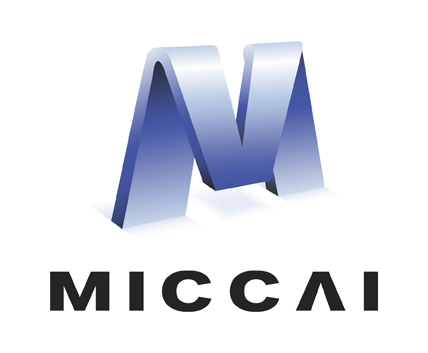Abstract
Segmentation studies in medical image analysis are always associated with a particular task scenario. However, building datasets to train models to segment multiple types of organs and pathologies is challenging. For example, a dataset annotated for the pancreas and pancreatic tumors will result in a model that cannot segment other organs, like the liver and spleen, visible in the same abdominal computed tomography image. The lack of a well-annotated dataset is one limitation resulting in a lack of universal segmentation models. Federated learning (FL) is ideally suited for addressing this issue in the real-world context. In this work, we show that each medical center can use training data for distinct tasks to collaboratively build more generalizable segmentation models for multiple segmentation tasks without the requirement to centralize datasets in one place. The main challenge of this research is the heterogeneity of training data from various institutions and segmentation tasks. In this paper, we propose a multi-task segmentation framework using FL to learn segmentation models using several independent datasets with different annotations of organs or tumors. We include experiments on four publicly available single-task datasets, including MSD liver (w/ tumor), MSD spleen, MSD pancreas (w/ tumor), and KITS19. Experimental results on an external validation set to highlight the advantages of employing FL in multi-task organ and tumor segmentation.
C. Shen and P. Wang—Equal contribution.
Access this chapter
Tax calculation will be finalised at checkout
Purchases are for personal use only
Similar content being viewed by others
References
Altini, N., et al.: Liver, kidney and spleen segmentation from CT scans and MRI with deep learning: a survey. Neurocomputing 490, 30–53 (2022). https://doi.org/10.1016/j.neucom.2021.08.157, https://www.sciencedirect.com/science/article/pii/S0925231222003149
Chen, S., Ma, K., Zheng, Y.: Med3D: transfer learning for 3d medical image analysis. arXiv preprint arXiv:1904.00625 (2019)
Dayan, I., et al.: Federated learning for predicting clinical outcomes in patients with Covid-19. Nat. Med. 27(10), 1735–1743 (2021)
Heller, N., et al.: The state of the art in kidney and kidney tumor segmentation in contrast-enhanced CT imaging: Results of the KITS19 challenge. Med. Image Anal. 67, 101821 (2021). https://doi.org/10.1016/j.media.2020.101821
Heller, N., et al.: The KITS19 challenge data: 300 kidney tumor cases with clinical context, CT semantic segmentations, and surgical outcomes (2019). https://doi.org/10.48550/ARXIV.1904.00445, https://arxiv.org/abs/1904.00445
Huang, R., Zheng, Y., Hu, Z., Zhang, S., Li, H.: Multi-organ segmentation via co-training weight-averaged models from few-organ datasets. In: Martel, A.L., et al. (eds.) MICCAI 2020. LNCS, vol. 12264, pp. 146–155. Springer, Cham (2020). https://doi.org/10.1007/978-3-030-59719-1_15
Landman, B., et al.: 2015 MICCAI multi-atlas labeling beyond the cranial vault - workshop and challenge (2015). https://doi.org/10.7303/syn3193805
Li, Q., He, B., Song, D.: Model-contrastive federated learning. In: Proceedings of the IEEE/CVF Conference on Computer Vision and Pattern Recognition, pp. 10713–10722 (2021)
Li, W., et al.: Privacy-preserving federated brain tumour segmentation. In: Suk, H.I., Liu, M., Yan, P., Lian, C. (eds.) Machine Learning in Medical Imaging, pp. 133–141. Springer, Cham (2019)
McMahan, H.B., Moore, E., Ramage, D., Hampson, S., y Arcas, B.A.: Communication-efficient learning of deep networks from decentralized data. In: AISTATS (2017)
Nguyen, D.C., Ding, M., Pathirana, P.N., Seneviratne, A., Zomaya, A.Y.: Federated learning for covid-19 detection with generative adversarial networks in edge cloud computing. IEEE Internet of Things J. 9, 10257–10271 (2021)
Nvidia Corporation: Nvidia FLARE, June 2022. https://doi.org/10.5281/zenodo.6780567,https://github.com/NVIDIA/nvflare
Rieke, N., et al.: The future of digital health with federated learning. NPJ Digit. Med. 3(1), 1–7 (2020)
Roth, H.R., et al.: Federated learning for breast density classification: a real-world implementation. In: Domain Adaptation and Representation Transfer, and Distributed and Collaborative Learning, pp. 181–191. Springer, Cham (2020). https://doi.org/10.1007/978-3-030-60548-3
Seo, H., Huang, C., Bassenne, M., Xiao, R., Xing, L.: Modified U-Net (mU-Net) with incorporation of object-dependent high level features for improved liver and liver-tumor segmentation in CT images. IEEE Trans. Med. Imaging 39(5), 1316–1325 (2020). https://doi.org/10.1109/TMI.2019.2948320
Sheller, M.J., et al.: Federated learning in medicine: facilitating multi-institutional collaborations without sharing patient data. Sci. Rep. 10(1), 1–12 (2020)
Shen, C.: Multi-task federated learning for heterogeneous pancreas segmentation. In: Oyarzun Laura, C., et al. (eds.) DCL/PPML/LL-COVID19/CLIP -2021. LNCS, vol. 12969, pp. 101–110. Springer, Cham (2021). https://doi.org/10.1007/978-3-030-90874-4_10
Simpson, A.L., et al.: A large annotated medical image dataset for the development and evaluation of segmentation algorithms. CoRR abs/1902.09063 (2019). http://arxiv.org/abs/1902.09063
Wang, P., et al.: Automated pancreas segmentation using multi-institutional collaborative deep learning. In: Albarqouni, S., et al. (eds.) DART/DCL -2020. LNCS, vol. 12444, pp. 192–200. Springer, Cham (2020). https://doi.org/10.1007/978-3-030-60548-3_19
Yu, Q., et al.: C2FNAS: coarse-to-Fine neural architecture search for 3D medical image segmentation. In: 2020 IEEE/CVF Conference on Computer Vision and Pattern Recognition (CVPR), December 2019
Zhang, J., Xie, Y., Xia, Y., Shen, C.: DodNet: learning to segment multi-organ and tumors from multiple partially labeled datasets. In: Proceedings of the IEEE/CVF Conference on Computer Vision and Pattern Recognition (CVPR), pp. 1195–1204, June 2021
Author information
Authors and Affiliations
Corresponding author
Editor information
Editors and Affiliations
Rights and permissions
Copyright information
© 2022 The Author(s), under exclusive license to Springer Nature Switzerland AG
About this paper
Cite this paper
Shen, C. et al. (2022). Joint Multi Organ and Tumor Segmentation from Partial Labels Using Federated Learning. In: Albarqouni, S., et al. Distributed, Collaborative, and Federated Learning, and Affordable AI and Healthcare for Resource Diverse Global Health. DeCaF FAIR 2022 2022. Lecture Notes in Computer Science, vol 13573. Springer, Cham. https://doi.org/10.1007/978-3-031-18523-6_6
Download citation
DOI: https://doi.org/10.1007/978-3-031-18523-6_6
Published:
Publisher Name: Springer, Cham
Print ISBN: 978-3-031-18522-9
Online ISBN: 978-3-031-18523-6
eBook Packages: Computer ScienceComputer Science (R0)





